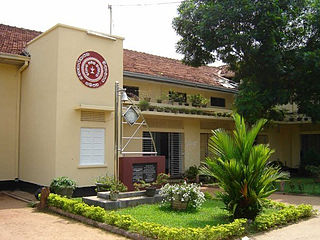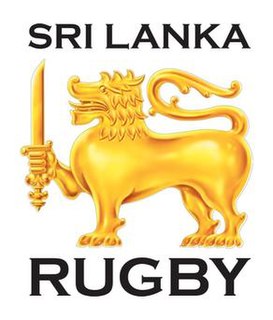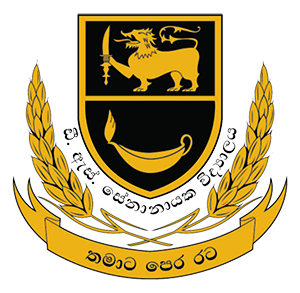Related Research Articles

Kandy is a major city in Sri Lanka located in the Central Province. It was the last capital of the ancient kings' era of Sri Lanka. The city lies in the midst of hills in the Kandy plateau, which crosses an area of tropical plantations, mainly tea. Kandy is both an administrative and religious city and is also the capital of the Central Province. Kandy is the home of the Temple of the Tooth Relic, one of the most sacred places of worship in the Buddhist world. It was declared a world heritage site by UNESCO in 1988. Historically the local Buddhist rulers resisted Portuguese, Dutch, and British colonial expansion and occupation.

Kurunegala is a major city in Sri Lanka. It is the capital city of the North Western Province and the Kurunegala District. Kurunegala was an ancient royal capital for 50 years, from the end of the 13th century to the start of the 14th century. It is at the junction of several main roads linking to other important parts of the country. It is about 94 kilometres (58 mi) from Colombo, 42 kilometres (26 mi) from Kandy and 51 kilometres (32 mi) from Matale.

Sri Sumangala College, in Panadura, Sri Lanka, was founded on 3 March 1909 at Rankoth Viharaya, in memory of Ven. Weligama Sri Sumangala Thero, who played an important role in Sri Lankan Buddhism. It is one of the oldest schools in the country. It is a national school, controlled by the central government as opposed to the Provincial Council. It is one of the largest Buddhist school in Sri Lanka, with a student population of 4,000 over 13 Grades.

Education in Sri Lanka has a long history that dates back two millennia. While the Constitution of Sri Lanka does NOT provide free education as a fundamental right, the constitution mentions that 'the complete eradication of illiteracy and the assurance to all persons of the right to universal and equal access to education at all levels" in its section on directive principles of state policy at (27. Sri Lanka's population had an adult literacy rate of 96.3% in 2015, which is above average by world and regional standards.Computer literacy in 2017 28.3% and phone users in 2017 105%, website users 32% in 2017 Education plays a major part in the life and culture of the country. which dates back to 543 BC. Sri Lanka's modern educational system was brought about by its integration into the British Empire in the 19th century. Education currently falls under the control of both the Central Government and the Provincial Councils, with some responsibilities lying with the Central Government and the Provincial Council having autonomy for others.

Rahula College is a boys' school in Sri Lanka, located in Matara district. Though it was originally a private Buddhist school, now it is run by the Government of Sri Lanka as a National School. Rahula College has two sections - the Primary section, which serves students from Grade 1 to Grade 5, and the Secondary section, which serves students from Grade 6 to Grade 13.

Isipathana College is a National school for boys located in Colombo, Sri Lanka. Founded in January 1952, the school was initially named as Isipathana Maha Vidalaya, but is now referred to simply as "Isipathana".
The "Madhya Vidyalaya" concept is a type of state school in Sri Lanka. Originally mooted in the 1930s by C.W.W. Kannangara, 54 Central Colleges were founded between 1943 and 1947 as part of his initiative to establish free education in Sri Lanka. The first of these was C. W. W. Kannangara Central College in Matugama, followed by others in areas such as Horana, Weeraketiya, Kattankudy, Mawathagama, Veyangoda, Piliyandala and Dickwella.

St John Sri Lanka is a charitable organisation providing healthcare services to the Sri Lanka public. Its members also perform voluntary first aid coverage duties during national events. The headquarters is located at 65/11, Sir Chittampalam A. Gardiner Mawatha, Colombo 02.

Tuan Burhanuddin Jayah, was a Sri Lankan educationalist, politician, diplomat and Muslim community leader and considered one of Sri Lanka's national heroes. He started his career as a school teacher and retired after serving 27 years as the principal of Zahira College, Colombo. Under his stewardship, Zahira College became one of the leading schools in the country.
The Scholarship Examination is a highly competitive Sri Lankan examination conducted by the Department of Examinations of the Ministry of Education. It is optional for students to undertake it during the final year of primary school. Based on the results of the exam, students could transfer to prominent national schools. The exams are held in two mediums: Sinhala, and tamil

Bandaranayake College Gampaha is a Buddhist Boys' school in Gampaha, Sri Lanka, founded on 18 September 1918. The school has a student population exceeding 5,000 across 8 grades from grade 6 to advanced level classes, on a campus of 8.1 ha. Boys are admitted at grade six, based on the results of an island-wide Scholarship Examination.

Sri Lanka Rugby is the governing body for rugby union in Sri Lanka. It is one of the oldest governing bodies in the world, being founded as the Ceylon Rugby Football Union in 1908.
Azhar College is a Muslim school established in 1907 in Akurana in the Kandy District of Central Province, Sri Lanka. It is a government-funded school based on national secondary education system of the Curriculum of Ministry of Education. The school is one of the leading Muslim educational institutions in Sri Lanka, with a student population of more than 3,000. Azhar College has classes starting from grade 1 to Advanced level classes in both English and Tamil medium. Azhar College celebrated its centenary in the year 2007 with grand festivities. Azhar is the only Muslim school in the country to play national level basketball and has clinched the national title. The Azhar-Madeenian big match is played every year between Azhar College and Madeena Central College - Madawela and is the only big cricket big match played between two Muslim schools.
Taxila Central College is a leading selective entry coeducational school located in Horana, Sri Lanka. It was started in 1905 by Colonel Henry Steel Olcott as a National School.

Royal College is a selective entry boys' school located in Colombo, Sri Lanka. Started as a private school by Rev Joseph Marsh in 1835, it was established as the Colombo Academy by Sir Robert Wilmot-Horton in January 1836, as part of the implementation of the recommendations of the Colebrooke Cameron Commission (1833), and was the first government-run secondary school for boys in the island.
Panadura Royal College is a provincial school in Panadura, Sri Lanka.

Royal Central College - Polonnaruwa is a national school in Polonnaruwa, Sri Lanka.
Bandaranayake Central College, Veyangoda, also known as “Veyangoda Central College (VCC)”, is a National school in Sri Lanka. The school was originally one of the three first Central Colleges established under the education reforms of late Hon. C. W. W. Kannangara, who introduced free education in Sri Lanka. Today about 2640 students are studying from grade 6 to 13 and academic staff of 135 are engaged in the teaching process.
Wickramabahu Central College , founded in 1946, is a Madhya Maha Vidyalaya located in Gampola in Central Province, Sri Lanka. It is a Buddhist school with around 90 teaching staff members and around 1,500 students. It has been a co-educational school for the past 64 years.

D. S. Senanayake College is a boys' primary and secondary national school in Cinnamon Gardens, Colombo, Western Province, Sri Lanka. It was established on 10 February 1967 under the stewardship of R. I. T. Alles, and was named after the first Prime Minister of Sri Lanka, D. S. Senanayake.
References
- ↑ "MR/Godapitiya National College". Godapitiya-CRC. Archived from the original on 2014-05-29. Retrieved 2012-06-02.